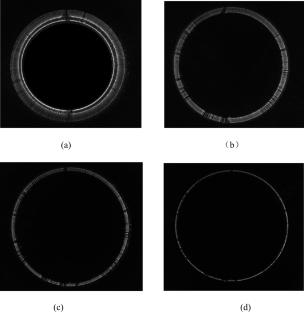A Diffraction Effect Investigation for the Solar Irradiance Absolute Radiometer on the Fengyun-3F Satellite
Abstract
The measurements of the Total Solar Irradiance (TSI) is a primary means to investigate solar activity and key measurement for understanding global climate change. The aperture diffraction is an error factor for the Solar Irradiance Absolute Radiometer (SIAR) on the Fengyun-3F (FY-3F) satellite. The diffraction effect correction factors can currently only be obtained by simulation, and they are obtained based on a series of approximate conditions that do not allow the accuracy of the diffraction correction results to be assessed. In this paper, we establish the diffraction effect measurement equipment based on the dark imaging technology and the theory of diffraction by Fraunhofer. The total light image and the aperture diffraction images of different angles were obtained by the CCD camera. The images were corrected by linearity, background, and continuity. Then, the diffraction effect curve of diffraction angle can be obtained. Finally, the diffraction correction factor of SIAR/FY-3F can be obtained by the accumulation of multiple apertures and combining the weighted integration of the solar spectrum. The results illustrated that the value of the diffraction correction factor of the SIAR aperture system on the FY-3F satellite is \(2.85\times 10^{-3}\), and the uncertainty of diffraction effect experimental measurement is 4.62%, which reduces the measurement error of the diffraction effect on the total solar irradiance to \(1.32\times 10^{-4}\). This result provides a technical basis for high-precision TSI measurement.



 求助内容:
求助内容: 应助结果提醒方式:
应助结果提醒方式:


